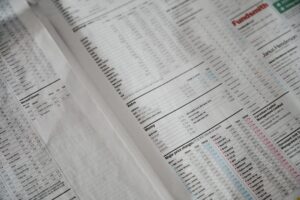How to Combine Fibonacci Trading with Other Technical Indicators for Better Forex Results
Technical analysis is an essential tool for forex traders. It helps them understand the market dynamics and make informed trading decisions. Fibonacci retracement levels are one of the most popular technical indicators used by forex traders. They are based on the Fibonacci sequence, a mathematical pattern that occurs frequently in nature and financial markets.
Fibonacci retracement levels are used to identify potential support and resistance levels in a market. These levels are derived from the Fibonacci sequence, which starts with 0 and 1, and each subsequent number is the sum of the two preceding numbers (0, 1, 1, 2, 3, 5, 8, 13, 21, 34, and so on).
The key retracement levels used in forex trading are 23.6%, 38.2%, 50%, 61.8%, and 78.6%. These levels are calculated by drawing a trendline between two extreme points on a chart and then dividing the vertical distance by the Fibonacci ratios.
While Fibonacci retracement levels can be effective on their own, combining them with other technical indicators can enhance their accuracy and improve forex trading results. Here are a few ways to combine Fibonacci trading with other technical indicators:
1. Moving Averages:
Moving averages are widely used in forex trading to identify trends and potential support and resistance levels. By combining Fibonacci retracement levels with moving averages, traders can get a more comprehensive view of the market. For example, if a Fibonacci retracement level coincides with a moving average, it can provide a stronger signal for a potential reversal or continuation of a trend.
2. Oscillators:
Oscillators, such as the Relative Strength Index (RSI) or the Stochastic Oscillator, are used to identify overbought or oversold conditions in the market. When combined with Fibonacci retracement levels, oscillators can help traders identify potential turning points in the market. For instance, if a Fibonacci retracement level aligns with an oversold condition indicated by an oscillator, it can signal a possible reversal in the market.
3. Candlestick Patterns:
Candlestick patterns are another popular tool used in technical analysis. They provide valuable information about market sentiment and potential reversals. When combined with Fibonacci retracement levels, candlestick patterns can strengthen the trading signal. For example, if a bearish candlestick pattern forms near a Fibonacci retracement level, it can indicate a higher probability of a bearish reversal.
4. Support and Resistance Levels:
Support and resistance levels are significant price levels where the market tends to pause or reverse. When combined with Fibonacci retracement levels, support and resistance levels can provide additional confirmation for potential trade setups. If a Fibonacci retracement level aligns with a strong support or resistance level, it enhances the probability of a successful trade.
5. Trendlines:
Trendlines are used to identify the direction of a trend and potential breakout or breakdown levels. When combined with Fibonacci retracement levels, trendlines can help traders determine the strength of a trend and potential reversal points. If a Fibonacci retracement level aligns with a trendline, it can indicate a higher probability of a trend continuation or reversal.
In conclusion, Fibonacci retracement levels are powerful technical indicators that can help forex traders identify potential support and resistance levels in the market. However, combining them with other technical indicators can enhance their accuracy and improve trading results. By using moving averages, oscillators, candlestick patterns, support and resistance levels, and trendlines in conjunction with Fibonacci retracement levels, traders can gain a deeper understanding of the market dynamics and make more informed trading decisions.






